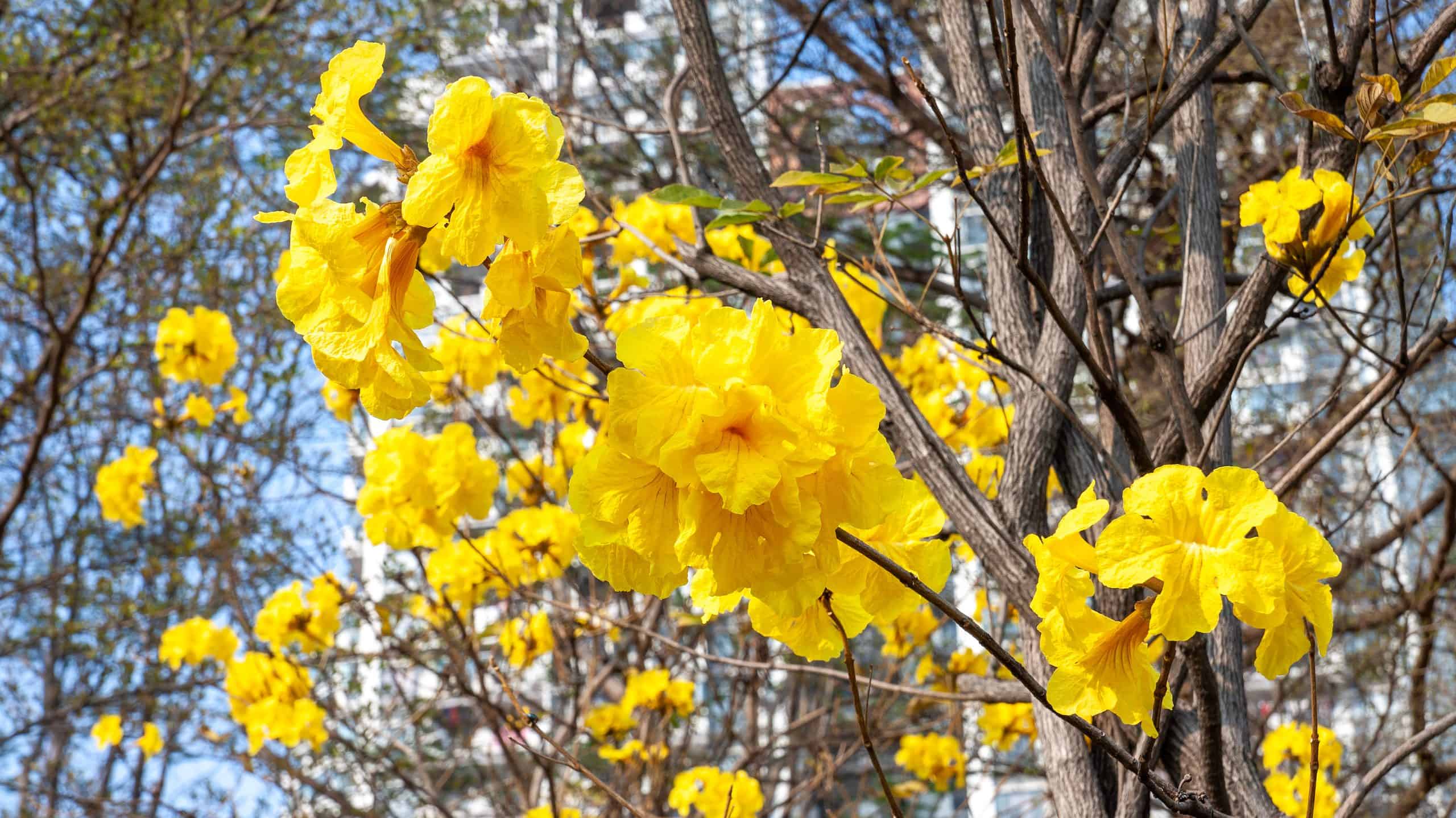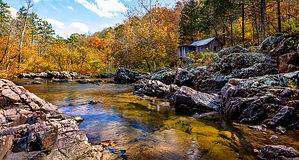In the heart of Brazil’s vibrant landscapes, a family of trees native to this enchanting land thrives. These trees, deeply woven into the country’s history and ecology, unveil a tale of diversity and resilience. From the lush Amazon rainforest to the sprawling Cerrado savanna, Brazil’s trees stand as guardians of its natural heritage.

Let’s take a look at some incredible trees that are native to Brazil! Some of these stunning trees won’t grow very well outside of the Amazon rainforest, but some will do quite well in tropical settings with adequate sunlight and care.
1. Brazil Nut Tree

Brazil nuts are a delicious type of nut produced by the Brazil nut tree. Unfortunately, many people are allergic to this type of nut.
©iStock.com/Paralaxis
The Brazil nut tree, scientifically known as Bertholletia excelsa, is a remarkable and towering tree found in the Amazon rainforest of Brazil, particularly in the regions of Amazonas, Acre, Rondônia, and Roraima. This majestic tree stands as a natural giant, often reaching heights of up to 160 feet, dominating the rainforest canopy.
Recognizable by its straight, thick trunk and expansive, symmetrical crown of large, deep green leaves, the Brazil nut tree is a true spectacle of nature. Its canopy provides shelter for various animal species, making it an essential part of the rainforest ecosystem.
Caring for the Brazil nut tree is as unique as the tree itself. It requires a tropical climate with high humidity and ample rainfall, which mimics its native Amazon rainforest habitat. Adequate sunlight is vital for its growth; thus, it flourishes best in open areas where it can absorb sunlight unobstructed. The tree relies on a specific pollinator, a type of large bee, for its reproduction, emphasizing the importance of maintaining a healthy ecosystem for successful pollination.
Interestingly, the Brazil nut tree’s nuts are its most notable feature, prized for their rich taste and nutritional value. These large, woody capsules house up to 20 edible seeds, known as Brazil nuts. Harvesting these nuts is a labor-intensive process, involving collection from the forest floor once the capsules naturally fall from the tree.
2. Theobroma Cacao Tree
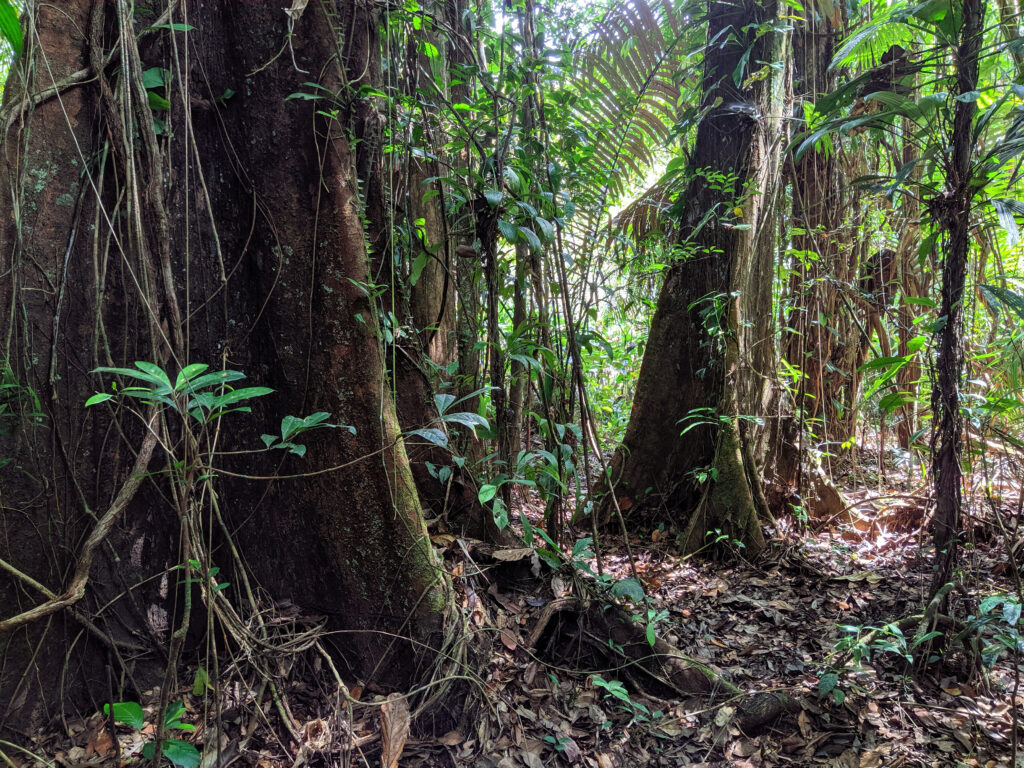
Cacao trees are sturdy and visually stunning trees. They are also vital in the production of chocolate around the world.
©Petr Muckstein/Shutterstock.com
The Theobroma cacao tree is a fascinating plant that plays a vital role in chocolate production. Indigenous to the Amazon rainforest, it thrives in various parts of Brazil, particularly in the states of Bahia, Pará, and Amazonas. This tree stands as the source of the beloved ingredient that forms the basis of chocolate.
Characterized by its glossy, elongated leaves and relatively small size, the cacao tree typically reaches about 20 to 30 feet in height. Its distinctive fruits, cacao pods, hang directly from the tree’s trunk and branches. These pods are football-shaped and vary in color, ranging from vibrant yellow to reddish-brown, signifying their ripeness.
Caring for the cacao tree demands a tropical climate with high humidity and consistent rainfall. It thrives best in shaded environments, often found beneath taller canopy trees. The cacao tree is sensitive to direct sunlight and necessitates regular irrigation to maintain optimal moisture levels. Proper drainage is crucial to prevent waterlogging, which can harm the tree’s roots.
One of the most intriguing aspects of the cacao tree is its unique reproduction process. Its flowers grow directly on the tree’s trunk and branches, a rare phenomenon known as cauliflory. These delicate flowers require specific pollinators, like tiny midges, for successful fertilization.
The cacao tree is celebrated not only for its ecological significance but also for its economic value. Its seeds, or cacao beans, are transformed into chocolate through a meticulous process of harvesting, fermenting, drying, roasting, and grinding. These beans are the foundation of the world’s beloved treat.
3. Rubber Tree
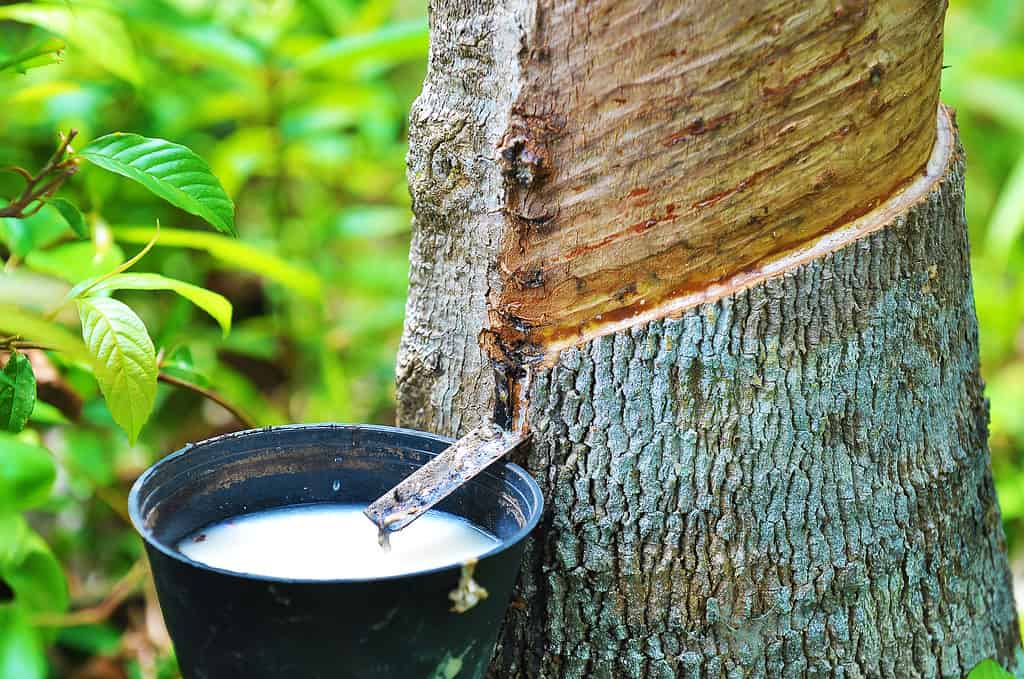
Rubber trees are a vital plant needed to produce latex, hence its name. It’s a vital plant in the international economy.
©underverse/iStock via Getty Images
The rubber tree, scientifically named Hevea brasiliensis, is a significant plant known for its latex, the primary ingredient in natural rubber production. Originally native to the Amazon rainforest, it’s found in various regions of Brazil, particularly in the states of Acre, Amazonas, and Rondônia.
Standing tall with a sturdy trunk and large, oval-shaped leaves, the rubber tree boasts a distinctive appearance. It can reach heights of around 100 feet, with its leaves forming a lush canopy. When the tree is wounded, it releases a milky, sticky substance called latex, which contains rubber particles that serve as the essential raw material for rubber production.
Caring for rubber trees requires specific conditions to ensure latex production. They flourish in tropical climates with abundant rainfall and warmth. Well-draining soil is vital to prevent waterlogging and root rot. Adequate spacing between trees is necessary to allow proper airflow and prevent the spread of diseases. Proper pruning helps maintain the tree’s shape and allows sunlight to reach lower branches.
To harvest latex, a careful process called “tapping” is employed. Tappers make shallow incisions on the tree’s bark, causing latex to ooze out and be collected in containers. The collected latex is then processed to create various rubber products.
The rubber tree has had a profound impact on industries and economies worldwide due to its vital role in rubber production. It played a significant role during the rubber boom in the late 19th and early 20th centuries, shaping the history of regions where it was cultivated.
4. Myriad Palm
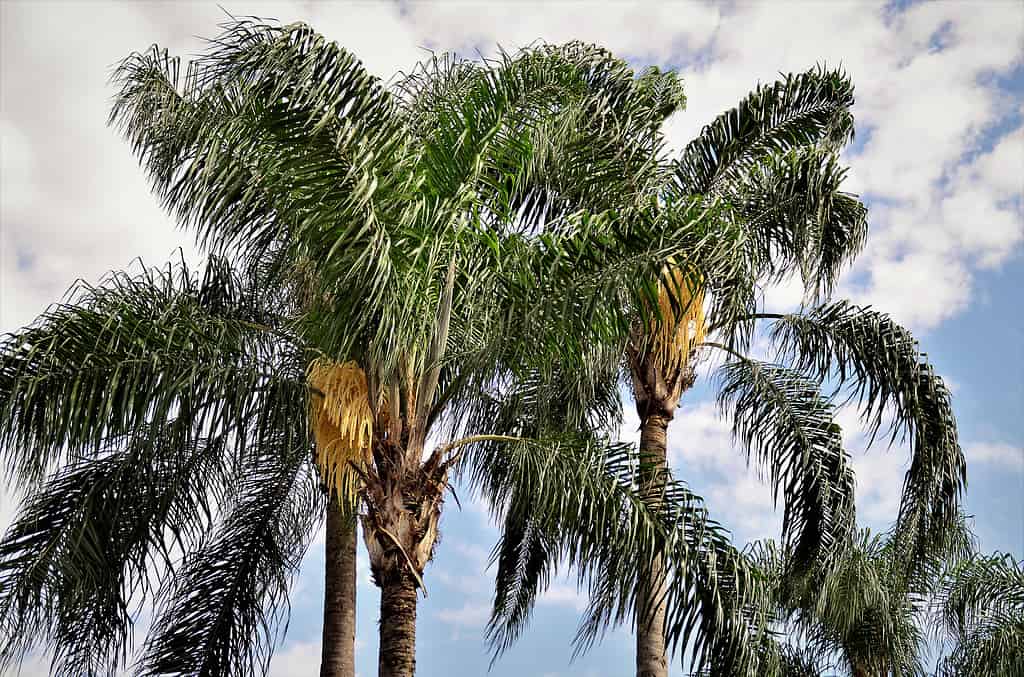
Myriad palms are
one of many palm species
that thrive in Brazil, and they have been planted in tropical regions worldwide as decorative and shade trees.
©iStock.com/ancyAyumi
The Myriad Palm, scientifically known as Syagrus romanzoffiana, is a striking palm tree species that grace the landscapes of Brazil. It predominantly thrives in the southern regions of the country, particularly in the states of Rio Grande do Sul, Santa Catarina, and Paraná.
Distinguished by its elegant fronds and impressive stature, the Myriad Palm is a sight to behold. It can reach heights of up to 50 feet, its slender trunk rising gracefully with a noticeable curvature. The fronds, or leaves, emerge in a circular arrangement, forming a lush crown of feathery green foliage. As the fronds sway in the breeze, they create a picturesque and soothing atmosphere.
Caring for the Myriad Palm entails providing it with the right conditions to flourish. It prefers a subtropical to tropical climate, with moderate humidity and well-draining soil. Adequate sunlight is crucial for its growth, although it can tolerate partial shade. Regular watering is essential, particularly during its early stages of growth, but overwatering should be avoided to prevent root rot.
Pruning dead fronds is a necessary maintenance task to keep the tree looking its best and to prevent any potential safety hazards. Fertilizing with a balanced palm fertilizer promotes healthy growth and vibrant foliage.
The Myriad Palm’s adaptability to various soil types and relatively low maintenance requirements make it a favored choice for landscaping in its native regions. Its charming appearance adds a touch of elegance to gardens, parks, and urban spaces.
5. Silk Cotton Tree
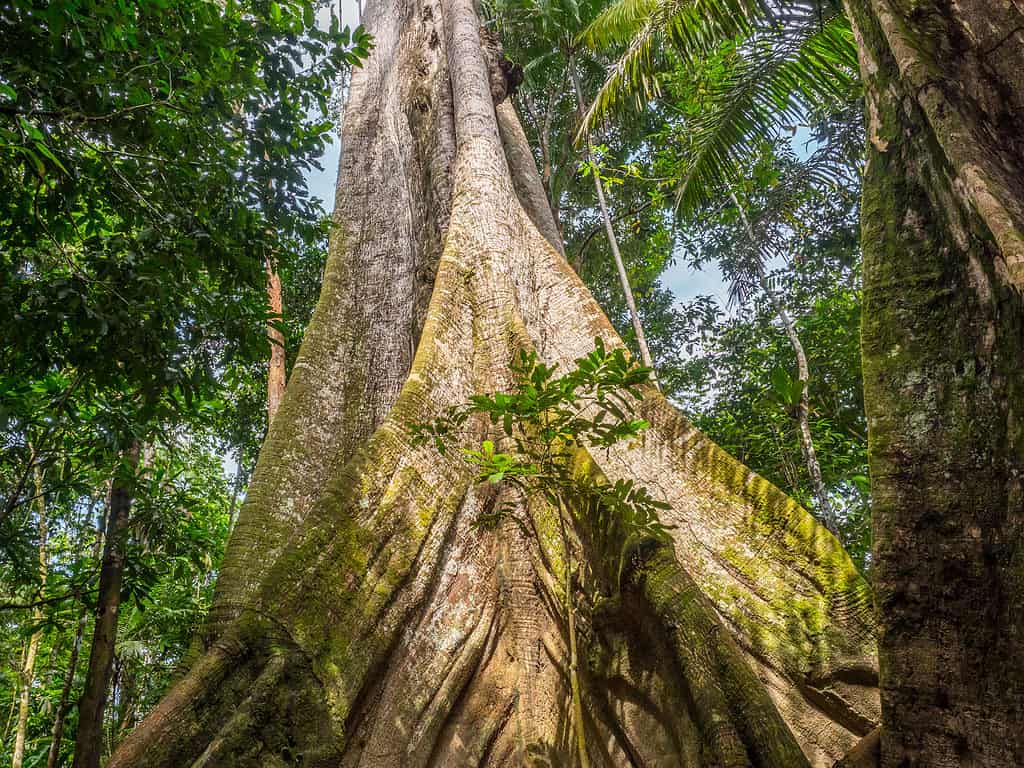
The silk cotton tree is also known as the ceiba tree. It can grow to massive heights of over 230 feet.
©Nowaczyk/Shutterstock.com
The Silk Cotton tree, scientifically referred to as Ceiba pentandra, is a captivating and sizable tree species native to various parts of Brazil. It can be found in regions with tropical and subtropical climates, such as the Amazon rainforest and the Cerrado biome, spanning states like Amazonas, Pará, and Mato Grosso.
Recognizable by its distinctive appearance, the Silk Cotton tree stands tall with a straight, towering trunk that can reach up to 230 feet in height. Its bark is grayish and smooth, while its most remarkable feature is the large, bulbous trunk base, which adds to its unique aesthetic. The tree’s deciduous nature means it sheds its leaves during dry seasons, often revealing its impressive structure even more prominently.
Caring for the Silk Cotton tree involves providing it with the right conditions for its growth. It thrives in full sunlight and well-draining soil. This tree is drought-tolerant once established, but it benefits from regular watering during its early stages. Pruning should focus on removing dead or diseased branches to maintain their health and shape. The Silk Cotton tree’s expansive root system requires ample space, making it important to consider its surroundings when planting.
Apart from its distinctive appearance, the Silk Cotton tree is also known for its valuable fibers that have been traditionally used for making textiles. Its large, white flowers attract pollinators like bees and bats, contributing to the ecosystem’s biodiversity.
6. Rosewood Tree
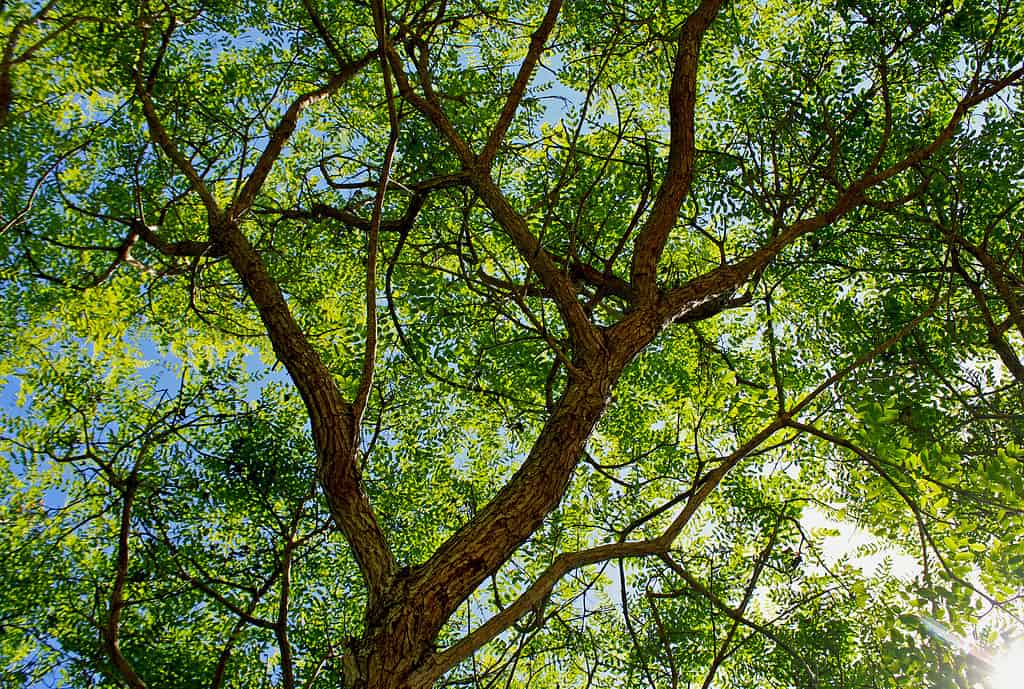
Rosewood trees are prized for their wood. High-quality musical instruments come from the wood of this tree.
©Westranger/iStock via Getty Images
Rosewood trees, scientifically known as Dalbergia nigra or Tipuana tipu, are a captivating and valuable group of tree species native to Brazil. It mainly flourishes in the Atlantic Forest region along the eastern coast, spanning states like Bahia, Minas Gerais, and Espírito Santo.
Renowned for its exquisite appearance, the Rosewood tree boasts a dense and dark-colored heartwood that is highly prized for its use in fine woodworking and crafting musical instruments. Its leaves are pinnate and glossy, forming an elegant canopy that provides shade in its native habitat. The tree’s overall height ranges from 30 to 50 feet, creating a moderately-sized and visually pleasing presence.
Caring for the Rosewood tree is crucial to its preservation. It requires a tropical climate with consistent rainfall and moderate temperatures. It thrives in well-draining soil and benefits from occasional fertilization to support healthy growth. Proper spacing between trees is essential to prevent competition and allow each tree to reach its full potential. Pruning dead or diseased branches helps maintain their vitality and appearance.
The Rosewood tree holds cultural significance, particularly in the crafting of musical instruments such as guitars and clarinets due to its exceptional tonal qualities. Its wood is highly sought after for its use in making high-end furniture, luxury items, and intricate carvings.
7. Golden Trumpet Tree
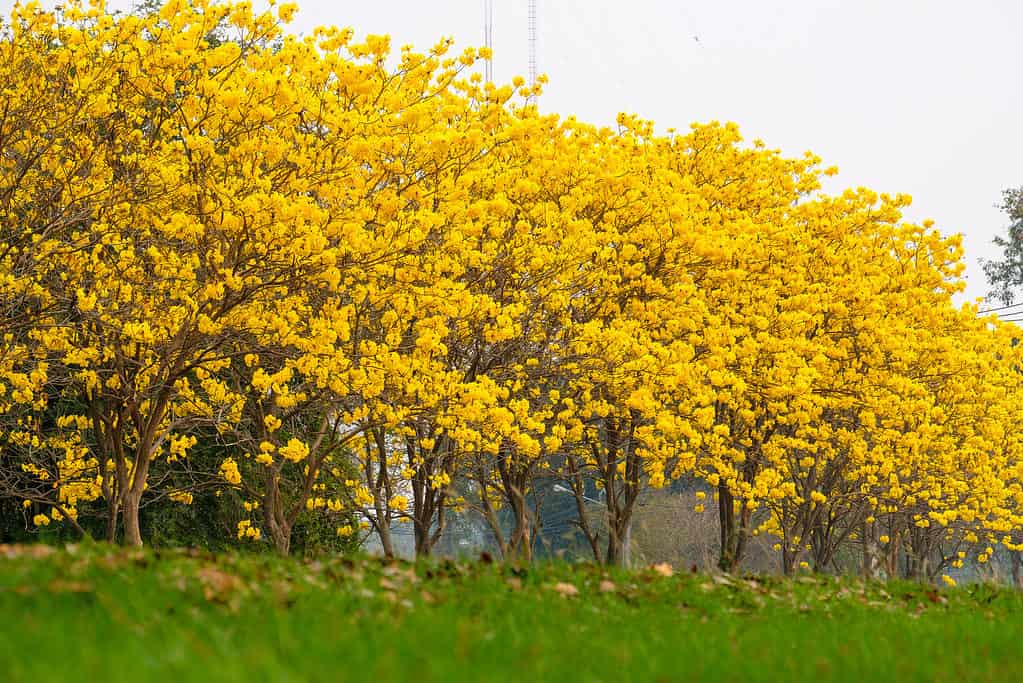
The golden trumpet tree is a very popular type of flowering tree in Brazil. Visitors will find them lining streets and sidewalks throughout Brazil’s major cities.
©sripfoto/Shutterstock.com
The Golden Trumpet tree, scientifically known as Handroanthus chrysotrichus, is a captivating flowering tree species that grace various parts of Brazil. It predominantly thrives in the southeastern regions of the country, particularly in states like São Paulo, Rio de Janeiro, and Minas Gerais.
Distinguished by its vibrant and trumpet-shaped flowers, the Golden Trumpet tree is a sight to behold. Its blossoms range in color from a rich golden yellow to a deep orange, creating a stunning contrast against its green foliage. The tree itself can grow to be around 30 to 40 feet in height, with a spreading canopy that offers shade and visual appeal.
Caring for the Golden Trumpet tree involves providing it with the right conditions for its flowering and growth. It prefers a subtropical to tropical climate with plenty of sunlight, making it ideal for gardens and landscapes in its native regions. The tree requires well-draining soil and regular watering, especially during dry periods. Proper pruning can help shape the tree and encourage more abundant flowering.
The Golden Trumpet tree’s prolific blooms make it a popular choice for ornamental landscaping, brightening up parks, streets, and gardens with its cheerful colors. It attracts pollinators like bees and butterflies, contributing to local biodiversity.
The Golden Trumpet tree adds a burst of color and natural beauty to Brazil’s landscapes. Its stunning flowers and relatively low maintenance requirements make it a favorite among gardeners and nature enthusiasts.
8. Camu Camu

Camu camu is a typical fruit of the Amazon region and has significant economic value to the country.
©Rafael Nilton Pelizzeri/iStock via Getty Images
The Camu Camu tree, scientifically known as Myrciaria dubia, is a unique and valuable plant native to the Amazon rainforest in Brazil. It predominantly thrives in the northern regions of the country, specifically in states like Amazonas and Acre.
Recognized for its small, round, and sour fruits, the Camu Camu tree is relatively small in size, typically reaching about 10 to 16 feet in height. Its glossy, dark green leaves form a lush canopy that provides habitat and shade for various wildlife species. The tree’s inconspicuous white flowers eventually give way to the highly sought-after camu camu fruits.
Caring for the Camu Camu tree entails mimicking its natural rainforest habitat. It prefers a tropical climate with high humidity and plenty of rainfall. Proper drainage is essential to prevent waterlogging, which can damage its roots. The tree requires full sunlight to thrive and produce abundant fruits. Regular watering during dry periods is vital, especially for young trees.
The camu camu fruits are a rich source of vitamin C and antioxidants, making them a popular ingredient in health supplements and beverages. Harvesting the fruits requires careful handling to ensure their freshness and nutritional value.
Due to its nutritional and economic value, the Camu Camu tree has gained attention not only in local communities but also on a global scale. The sustainable harvesting of its fruit makes contributions to the livelihoods of people in the Amazon rainforest.
The Camu Camu tree is a remarkable example of the Amazon’s diverse flora. Its small stature, unique fruits, and nutritional benefits make it a significant species in Brazil’s rainforest ecosystems.
Summary of Beautiful Trees Native to Brazil
| # | Tree | Sunlight Needs |
|---|---|---|
| 1 | Brazil Nut Tree | Full sun to partial shade |
| 2 | Theobroma Cacao Tree | Filtered sun to partial shade |
| 3 | Rubber Tree | Bright, indirect light to partial shade |
| 4 | Myriad Palm | Full sun to partial shade |
| 5 | Silk Cotton Tree | Full sun |
| 6 | Rosewood Tree | Full sun to partial shade |
| 7 | Golden Trumpet Tree | Full sun |
| 8 | Camu Camu | Full sun |
Thank you for reading! Have some feedback for us? Contact the AZ Animals editorial team.

